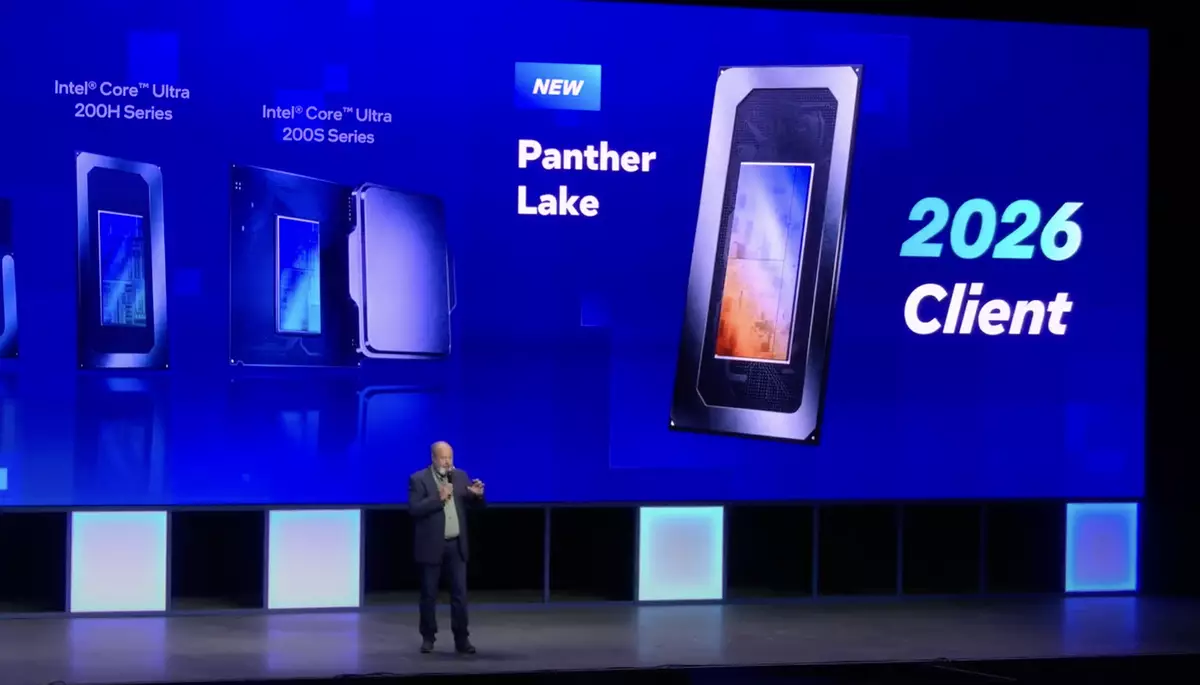Intel recently provided an update at the Intel Vision 2025 conference, where the spotlight was on the next-gen Panther Lake CPU. New CEO Lip-Bu Tan aimed to establish a forward-looking vision, but much of the audience was left with an underwhelming feeling regarding product revelations. Panther Lake is touted as a significant evolution in Intel’s CPU lineup, amalgamating the power efficiency of Lunar Lake with the performance characteristics of Arrow Lake. However, the details shared became overshadowed by the reality that what is presented as innovation still abides by the lengthy production timelines and historical baggage that have plagued Intel in recent years.
Jim Johnson, Intel’s head of client computing, described Panther Lake as a CPU that combines efficiency and performance while taking advantage of the anticipated 18A process node. Despite the positive spin, the timeline left many industry observers skeptical. The planned production start later this year, with actual product availability pushed to 2026, projects a delay that casts a long shadow over Intel’s return to the forefront of technology. In a landscape accelerated by competitors like TSMC, this drawn-out timeline raises serious questions about Intel’s ability to reclaim its lost foothold in the CPU market.
Understanding Panther Lake’s Architecture
At its core, Panther Lake is viewed as an evolutionary step for Intel, designed to meet the modern computing demands for both performance and energy efficiency. Drawing on the strengths of previously established architectures, it seeks to balance power efficiency—hallmarks of the Lunar Lake—and the high-performance metrics associated with the Arrow Lake architecture. This ambition, while promising, poses some significant challenges.
Intel’s reliance on TSMC for the manufacturing of its latest chips creates a scenario of dependency that can be detrimental to its supply chain flexibility. The dichotomy here is striking: while Intel aims for cutting-edge manufacturing and design innovation, it often finds itself unable to match TSMC’s production yields, potentially leading to shortages or delayed releases. As we’re reminded of past struggles with the infamous 10nm node, there is a palpable anxiety among consumers and investors alike regarding the feasibility of achieving true parity in a rapidly evolving market.
The 18A Process Node: Significance and Challenges
The anticipated 18A node is meant to signify a major technological leap, introducing new innovations like backside power. However, those innovations do not come without complications. Reports of poor yield rates during initial testing stages paint a concerning picture for Intel’s manufacturing capabilities moving forward. The developmental issues experienced with 18A are eerily reminiscent of Intel’s previous setbacks with 10nm technology, leading to legitimate inquiries about the company’s trajectory.
A critical aspect to consider is how competitive the 18A node might be when stacked against TSMC’s more advanced N3 nodes currently making waves in the market. Although Intel has touted its ambitious plans, any significant execution delays jeopardize its position amid competitors who are diligently pushing boundaries with efficiency and performance. The real test will be the chip’s adaptability to various applications—from laptops to high-end gaming machines—as well as its ability to deliver performance at par with or exceeding expectations in a competitive environment.
A Historical Context of Delays and Innovations
Looking back on Intel’s narrative reveals a concerning trend—each ambitious leap has often been accompanied by substantial delays. Intel’s historical struggle to innovate in tandem with its production capabilities highlights a recurring irony. The company’s efforts to unearth next-level technology are consistently hampered by choices made in prior generations. To many, the Panther Lake update appears to be more about navigating familial challenges than unveiling a cutting-edge product that propels the brand into the technology pantheon.
With competitors like AMD and NVIDIA making monumental strides in processor design and performance, the stakes have never been higher for Intel. A continued narrative of delays risks deepening consumer and market trust issues that would otherwise be resolved through timely innovations and competitive products. The question begs: will Panther Lake represent the turning point for Intel’s ascendance, or simply another chapter in its struggle to regain the tech leadership it once held? In an arena where competitors aren’t standing still, Intel’s clock is ticking, and it must adapt swiftly to avoid being left in the dust.

